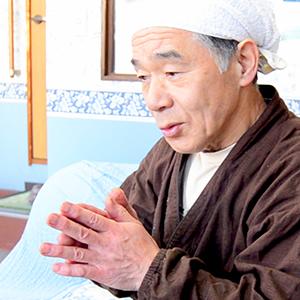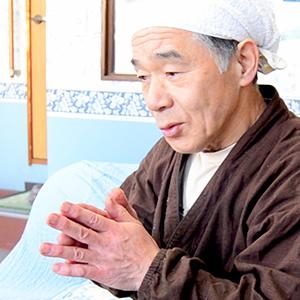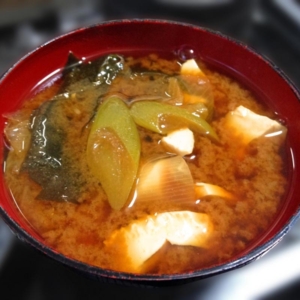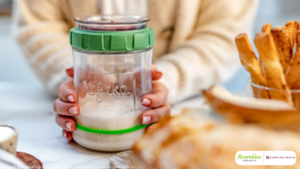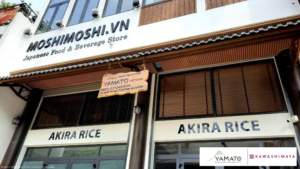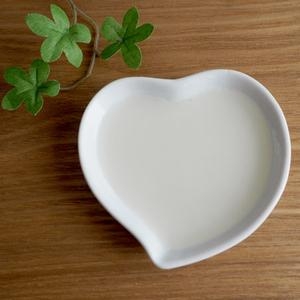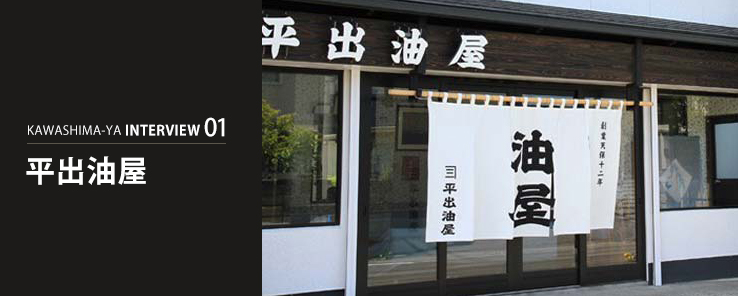
The Hiraide Oil Store is a long-established oil shop that has the tradition since its founding in 1842 (12th year of Tempō Era).
Based on their principle that is to make “Natural oil with a nice fragrance and delicious flavor as great as possible”. The Hiraide Oil Store is sticking to the traditional manufacturing method to manufactures their oil in Aizuwakamatsu City, Fukushima Prefecture.
Once you try this delicious oil with its material’s (rapeseed) flavor, aroma, and beautiful color for stir-fry dish or fried-dish, you will not be able to use any other oil.
We asked the sixth generation owner, Mr. Yuichi Hirade, about the Hiraide Oil Store’s history, their commitment to making oil, difference between their oil and the oil sold at supermarkets, etc.
1. The Beginning of Hiraide Oil Shop
―― Now, Mr. Yuichi Hiraide, what generation’s president are you in Hiraide Oil Store?
- Mr. Hiraide:
-
I’m the sixth generation president. We actually have a goodwill, the Hiraide Oil Shop was established in 1842 (12th year of Tenpo Period).
It is written right in Mr. Kawashima’s right side, right on that pillar. Can you see it?
―― Yes, I can see it.
- Mr. Hiraide:
-
In my memory, perhaps our store was not an oil store in The Edo Period (1603 – 1868).
First, we sold silk and moth thread to the castle.
But then there was Boshin War, and it became the Meiji Period (starts in 1869). There are no castles in the Meiji Period, and we thought about what should we do next?
That is when our whole house was for rice fields until about the 30th-ish year of Showa Period (1955-1964). I think it was around when I was in elementary school to junior high school. Since now our whole house is all constructed.
Back then, it was all rice field as far as the eyes can see. And most of our neighbourhood was our field. Say, if a farmer borrows our rice fields and can produce 10 bags of rice, we will get 3 bags from that. That is why we start to become a rice store that buys rice from the farmers in the Meiji Period.
―― I see, I see.
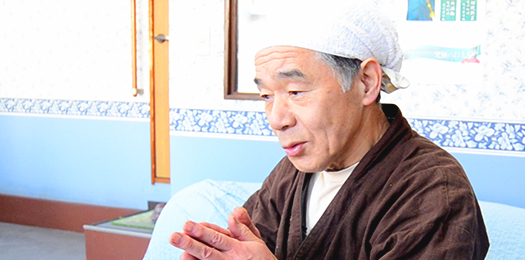
Mr. Hiraide who gives me polite explanation in a calm tone.
- Mr. Hiraide:
-
Soon after that, we do not only sell rice but also various kinds of millets.
There are soybeans, cowpeas, etc. But among those, rapeseed is increasing rapidly.
Then, around the Meiji Period, although I forgot what year was that, we started to squeezing rapeseed (to make oil).
That is when we are doing both as rice store and oil store.
This time, around the 2nd world war (1942-1943), there was a regulation to not take business for personal merit only because we sell something that everyone uses (like salt). We were told to choose between rice or oil, so we became an oil store ever since.So, from around 1942-1943, we are doing as oil store and it was always been like that until now.
At first, we only sell oil in Aizuwakamatsu City.
At my thirties, the 50th-ish year of Showa Period (1975s), many supermarkets have been built, and salad oil and such has become popular. We are steadily becoming an oil store.
――That seems tough…
- Mr. Hiraide:
-
Well, actually at that time, our store was on crisis that we couldn’t do anything about it.
That is because in around 1955, there was a cooperative association called Rapeseed Production Association too in Aizuwakamatsu City. This association was in throughout Inawashiro City to Aizuwakamatsu City in Fukushima Prefecture. And in that area, there are 14 oil stores.
Time flies and more people are changing their business into gas stations and supermarkets.
Now there is only two oil shop in Aizuwakamatsu City, that are Hiraide Oil Store and a place called Mitsutaya Store.
―― So the oil store has been reduced considerably…
- Mr. Hiraide:
-
After that, around 1975s, we start to sell the oil outside the Fukushima Prefecture. In 1985s, when we start to sell our product outside the prefecture, there are stores like Osawa Japan Store, Natural House, and Katayama Store from Kanagawa Prefecture to become our main wholesales. And from there, now 98% of our products are sold outside the Fukushima Prefecture.
In that way, the people who come to our store in Aizuwakamatsu are decreasing though some customers are still coming. So there is no need to put many displays in our store.
―― I see.
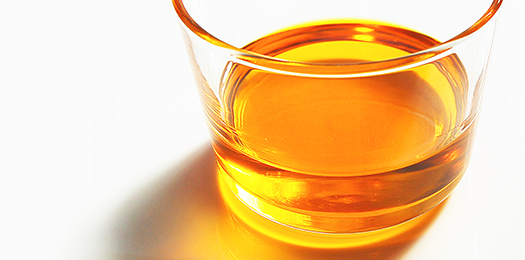
The rapeseed oil from Hiraide Oil Store. It characterized by the beautiful amber color with a rich aroma.
- Mr. Hiraide:
-
In the last 20 years, we started to make sesame oil. When we are making sesame oil, it takes one full day to clean, changing the mats, and squeezing the sesame.
We are also able to sell many sesame oils outside the prefecture, too. I think it is because everyone’s lifestyle has improved.
At first, it was expensive. Let’s say that the price is doubled if compared with the product in the supermarket. But it doesn’t mean the expensive sesame oil cannot be used.
Everyone’s lifestyle (for health) has been improved. I think that is the most important point.
Although it is a little bit expensive, people are keeps on buying the sesame oil.
2. Commitment for “Tamajime” Method
―― Sesame oil is also very popular in recent years. Are you squeezing rapeseed and sesame seed on a different day of the week?
- Mr. Hiraide:
-
Rather than saying different days of the week, we do it for example, it will need one month to squeeze an oil. We will squeeze the rapeseed in one month and a half, and then squeeze the sesame in another half month. From the amount of ratio, rapeseed is 80% and sesame is 20%.
―― How do you look for raw materials?
- Mr. Hiraide:
-
Raw materials are now mostly produced in Hokkaido. From Hokkaido Prefecture, the materials are from Hakodate City, Sapporo City, and Hiyama Subprefecture.
There are also rapeseed from Shimokita Peninsula, in other words, it is a rapeseed from Aomori Prefecture. Although there are some others, but our store mostly use the rapeseed from Hokkaido Prefecture. Rapeseed are in season once a year in from September to the beginning of October.
There is an offer (bid) system in Tokyo. We received the rapeseed from the merchants of Hokkaido or Aomori through the offer to come here.
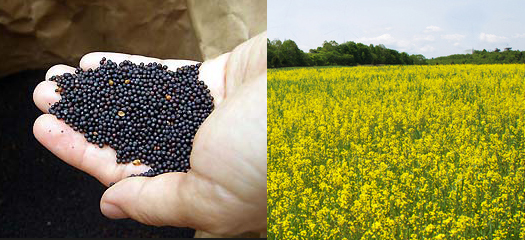
Hiraide Oil Store uses rapeseed from Hokkaido as the raw material.
―― What is Tamajime Method?
- Mr. Hiraide:
-
※ Tamajime method is method to squeeze oil slowly over time under low pressure and normal temperature using special machine called the “Tamajime” squeezing machine.
―― How long have you been using the method?
- Mr. Hiraide:
-
We have been using the present machine since the 13-14th year of Showa Period (1938-1934).
We use the same weight (to squeeze the oil with pressure) as we are now. But in the past, we are using a different bag like hemp bags. We put the rapeseed little by little to the hemp bag. Add more bag and put another rapeseed on it like this. Until there are around four or five bags, I forgot the exact number, we then put it to the machine and squeeze it.
Now we are using mats. So we squeeze it one by one. So, we have been using the machine for about 75 years ago since we started using it since 1934. When doing maintenance for the machine, sometimes the number of gears will decrease, so as the core rods or bearings. We receive help from someone who is specialized in well digging for the machine reparation. He was once an ironworker, and we had him repaired our machine.
―― How many places other than your store, are currently using the same Tamajime Method?
- Mr. Hiraide:
-
I haven’t search it in details, but I think there are around 15 stores who have the Tamajime machine.
However, the Oshima City’s Tsubaki (Camellia) Oil said that they squeeze their oil, and some store around Kyushu also said to squeeze their oil.
Therefore, there are 10 stores including us that are squeezing their oil from the 15 stores. 10 stores are squeezing their oil (with Tamajime Method).
Our store, and there is a sesame oil store in Chiba Prefecture, too. There are many stores that squeeze sesame oil. Oil store that squeeze their rapeseed into oil is not that many. When I go to cities, I often see the squeezed sesame oil. The stores from Kyushu Island who are squeezing their rapeseed oil and sesame oil are 50-50. Since there are 3 places where you can get rapeseed, from Hokkaido Prefecture, Aomori Prefecture, and Kyushu Island, there are several oil shops too in Kyushu.
―― I see.
- Mr. Hiraide:
-
I’m thinking that our shop needs another Tamajime machine since we want to squeeze the oil for a longer time in the future. Someone have the machine, but they (the owner) can’t let the machine go even they are not using it.
Tamajime machine is a machine that can be used for many decades, as long as they are cleaned and checked periodically. So, if you don’t use something like computer system (for maintaining the machine), it will go bad.
As I mentioned earlier, this machine has gears, core rods, and bearings. As long as you cleaned it, the machine will work well. It’s not something that you could easily let go. I wonder if I should have one more machine..
But well, 5 million yen (about $ 46,047 USD) wouldn’t be enough if we want to make the machine from the up to the bottom. It’s not just expensive. This machine is very difficult to make. The upper part is possible to make, But the pressure part that will go up (it’s the bottom part of the machine) isn’t something that can be made easily. Although based on the theory, it is not impossible to make it.
――I see…
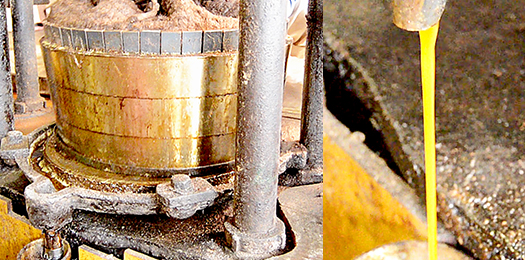
This is the Tamajime machine that has been used for many years. This machine will squeeze rapeseed and sesame seeds into oil.
- Mr. Hiraide:
-
The middle is iron. The other both side are casting. It will difficult to make it in the casting method, so in the future, it needs to be made with iron too.
The weight vessel (that made with iron) isn’t cut straight. It is made with cutting a hole in certain thickness, because the upper part is wider and the lower part is smaller. It is then cut diagonally. That’s why it takes quite a while to make the machine.
The ironworkers who could make the machine might agree to make some of the machines. But it may difficult if you just ask for one machine.
I have tried to asked about this in Niigata Prefecture.
3. The Difference with The Oil Sold at Supermarkets
―― Can you tell me the difference between the oil lined up in the supermarket and the oil you are making now?
- Mr. Hiraide:
-
First of all, the manufacturing method is completely different. I think we’ve talked a bit about the oil sold at the supermarkets, they are extracted by the method called extraction method. This method is using the chemical compount called hexane to extract the oil.
The method also includes drying (roasting) and steaming the raw materials, but then they are put into a tank in a large machine, of course, the size of the machine is completely different (ours are smaller).They will put a solvent to the tank, and the extraction will come out.
After a certain amount of time, the tank will put itself in centrifuge. Therefore the oil’s residue will remain (on the tank), while the oil and hexane will go out.
After that, the machine will heaten up and evaporates, and then cool down and become a liquid. The machine will be used again. They take the oil from there. That is the source of deacidification and degumming. For example, if the product has decoloring, they will give 1% to 2% amount of soda and take the decoloring part.
There also “deodorization” which is washing the oil in about 200 degrees to 250 degress with a vacuum. By doing so, the oil will deodorized.
I guess you already know about this, processing the oil in high temperature would make the bad things from the popularーOmega 3 and Omega 6, come out.
I guess Omega 3 and Omega 6 are an important topic right now. Unfortunately, these Omega 3 and Omega 6 doesn’t exist in oils sold at supermarkets.
―― I see, I see.
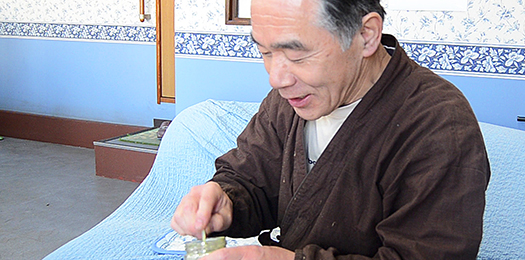
Mr. Hiraide told us about the difference with the oil sold at supermarkets.
- Mr. Hiraide:
-
We (The Hiraide Oil Store) squeeze our raw materials too, but we keep it in room temperature.
So we called it “Room Temperature Squeezing”.And, at the production for oil sold at supermarkets, there are machine called “expeller” that has high temperature.Extraction method use the “expeller”.
It is a machine in spiral shape, like an expeller when you break an ice for smelt fishing for example, the tip is thinner and the upper part is wider. Then it has a container (for the expeller) that made with iron in more than 1 cm thickness.The “expeller” then spiraling towards the bottom of the container, that is how they squeeze the raw material.
The machine will get hot (as the spiraling goes on) that even cannot be touched by our hands.
The machine will have a pressure, and the temperature rises with that pressure.
This is what “extraction method” looks like.
Because it will be quite hot, I called it the “High Temperature Squeezing”. Expeller is necessary to be cleaned and washed with water.
There will be a smell of burning iron by any means, so expeller must be washed with water. They wash the expeller (with some crude oil residue) with lukewarm water, or using water is also okay, and stir it, dry it with a fan overnight, so in the next day the oil and water are separated.
Then, the water is drained and the oil is heated to evaporate the remaining oil.
―― I see.
- Mr. Hiraide:
-
We (The Hiraide Oil Store), the Mitsutaya Store, and 1 more store have the same reason for not using the efficient machine “expeller”.
The reason is we thought it would be bad to use that kind of oil (that use expeller) for our food because of the applied high temperature, and the water might be dissolved with many bad compounds.
If there is no water (in the production method), the oil would not be oxidized. And by applying hot temperature (to the oil), it would weaken the strength of the oil. So we couldn’t use it. The “expeller” machine was made in around 1965-1975 (40-50th year of Showa Period), but at the end, only two oil shops (including us) that stays with the traditional method. It means that many of oil stores stop to using the traditional method.
What’s different is our squeezing method, and also, we filter our oil with only using a handmade paper called washi, this will keep the good part of the oil. By applying high temperature, decoloring, or something like that, the oil will lose its benefit (the good part) because of something insignificant things we did. The best product is squeezed oil as it is.
That is the different point of us with the major companies.
―― How is the efficiency of 50 kg of raw material in one production?
- Mr. Hiraide:
-
For example, the day will extend in summer so we could make oil from 500 kg of raw materials. If the approximate material is 500 kg, we could make like 90 pieces of bottle (one bottle’s content is 1800 ml).
And for cans (one can’s content is 18 L), we can make nine to ten cans in a day.
―― Then it is about one of third of the material? if you speak in proportion.
- Mr. Hiraide:
-
At 500 kg, yes, it’s one-third. If you go by weight, it is about one third.
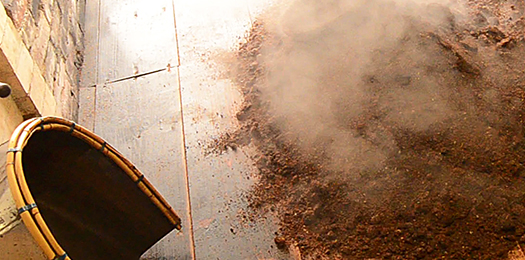
Rather than efficiency, Hiraide Oil Shop prioritized their oil in the manufacturing method that does not impair the taste of the material.
―― How is the proportion (percentage) of the finished product from major companies?
- Mr. Hiraide:
-
It’s around.. Wait, how many residue of oil do they produce?
In our case, there will be more than a half residue from the total raw material.In the case of a major company, perhaps, for example, the contents of oil in one rapeseed oil is 40%, it means that there will be 20 kg of raw material. So if the finished product is 1 ton, the raw material would not up to 400 kg. They will do production every day. It means that the major company could produce 700 – 800 cans every day. It is different from how they use the “extraction method”, and the company size is also different. Their company scale is 80 to 100 times bigger than ours, too.
With the squeezing using “expeller” machine we discussed earlier, it’s definitely three times more efficient.
4. How to Make The Same Quality Oil
―― You have been squeezing oil for decades now. What do you always do with care in making the oils?
- Mr. Hiraide:
-
What we care is we always making the same product. For example for the color different, sometimes the color of the oil is more light or dark. The color change depends on the way our worker roast the material, and it happens once a year or once every two years.
When the roasting is strong, the color is dark. And when the roasting is weak, the color becomes lighter. That’s why when a customer that bought our oil from Kawashima The Japanstore said that “this time the color is dark” or “the color is lighter”, even though not many people said that, the color is little different because of the way it is roasted.
Last year, around February or March, the color was a bit darker. At that time, did you call me (for asking about the complaint you received)?
―― I received it (call from customer) once.
- Mr. Hiraide:
-
At that time, I kind of moved the pot a little (at the roasting). And it made the fire coming out, so I made a way (for the fire) with a brick. I made the way with brick a bit wider so the rapeseed could dry more quickly. But the rapeseed burn instead, that’s where the dark color comes from. So there is a complaint about it, they said that it’s worrisome if the colors are so different.
The color different doesn’t mean there are quality different with the product.
So I called the customers and explained the situation to them.Therefore it is best to make the same item.
We are using one kind of machine and method. So we are making the same item as much as possible. I don’t know what the other oil shops do, but that’s how we do.
―― I’m always using your oil (especially) for stir-frying. But is there any using method that Mr. Hiraide recommends?
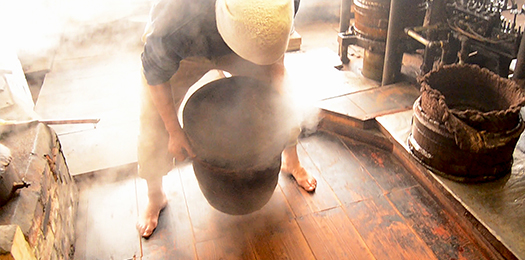
“Making the same product” is Hiraide Oil Shop’s motto.
- Mr. Hiraide:
-
My recommends is, first of all, you can use it for frying tempura or stir-frying because rapeseed oil is strong to heat. Also, the yellow color of rapeseed oil is also good.
Rapeseed oil’s color are natural from the rapeseed itself, so there are no chemical and artificial coloring. You can have a nice yellow color for your fried food. The color is more yellow than the ordinary soybean oil or salad oil.
―― I see, that’s right.
- Mr. Hiraide:
-
Yes. Also, rapeseed oil has a characteristic to make fried food softer. The fried tofu in the tofu restaurant uses the real oil to fried their tofu so it becomes softly fried. The outer parts will become softer. So the rapeseed oil has a characteristic to make fried food softer. And it has refreshing flavor.
The oil itself, of course, have a muddy/oily texture. And when you eat a fried food, of course, some oil will remain at your mouth. You will have to drink tea to reduce the oil in your mouth. And continue to eat like while repeating it. Surprisingly, rapeseed oil will have less oil remain in your mouth than salad oil. For that purpose, more tempura are fried with rapeseed oil.
An oil like salad oil is a type of oil that will remain in mouth. That is why in recent 5 to 7 years, many sweets shop are using rapeseed oil to make chiffon cake or cookies, because rapeseed has a high heat resistant and resulting a softer finish in your dish.
―― The person in the oil mill/factory, are they learning how to make the oil?
- Mr. Hiraide:
-
The person who squeeze together with me?
Yes, that person mainly knows how to squeeze the oil.
One more man over there, he will observe everything (production) while I go out, for example. I am now 70 years old. All three of our children are public officials, they are high school teachers. In the next 10 years, my eldest son, he’s now 42 years old, once told me not to let myself work (too hard) and do everything about the store. So when he’s 50 years old he said that he would be the school’s principal or taking over the store. But if he quits here and quits there, I think it’s not easy and I don’t want him to be like that. That’s why I’m bringing up that person so learn about the store.
He can do the work well, and when I go out, he can handle everything too, like dealing with customer’s interaction or handling the subtle change of the rapeseed.
But if something goes wrong, I don’t know if he can handle things right and quick. So I’m currently teaching him about the store from now on. Like, recently, he learned about our sales slip or the shipping, for example.
Well, he will learn gradually.
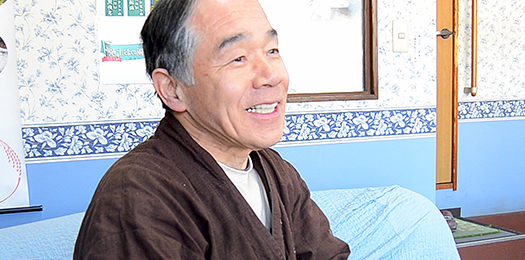
Mr. Hiraide spoke so cheerfully until the end.
―― What is the average amount of the squeezed rapeseed on average per month?
- Mr. Hiraide:
-
We can squeeze roughly 100 bottles in one can (of rapeseed). Oh, not 100. I think it’s around 150 to 200 bottles, on average.
There are situations where we will squeeze only rapeseed in one month. And there also a month when we squeeze sesame seed, too.
So on average, there will be around 200 bottles per month, more or less.
―― Thank you so much.
- Mr. Hiraide:
-
Thank you.

